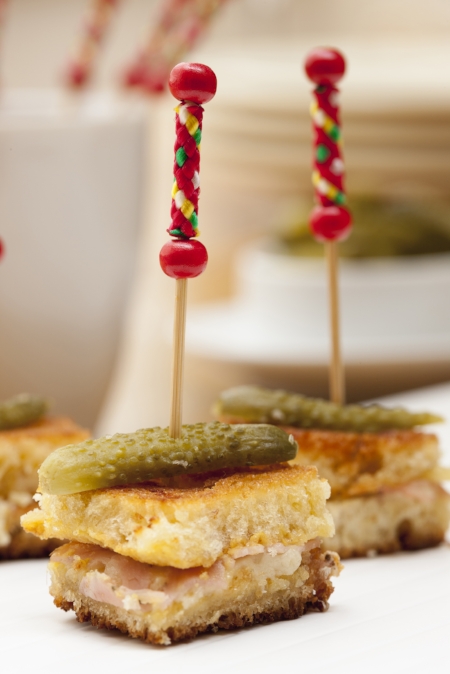The sauce for these brilliant, briny oysters is the amazing and versatile. How could the combination of oyster liquor, cream, butter, and truffle juice be bad?
The silken texture of the warmed oyster creates a fine textural contrast to the crunch of the truffle matchsticks.
4 servings
Equipment
A fine-mesh sieve; a flat, ovenproof serving dish; small jar with a lid; a mandoline or a very sharp knife.
Ingredients
12 large fresh oysters
1 cup (280 g) coarse sea salt
1 fresh black truffle (about 1 ounce; 30 g), cleaned
1/4 cup (60 ml) Truffle Cream (page 189 of Simply Truffles)
About 1 tablespoon truffle juice
2 teaspoons (10 g) Truffle Butter (page 191 of Simply Truffles )
1/2 teaspoon freshly squeezed lemon juice, or to taste
Method
1. Open the oysters, cut the muscle to extract it from the shell, and filter the oyster liquor through the fine-mesh sieve set over a small saucepan.
2. Cover the bottom of a heatproof serving dish (it should be large enough to hold the oysters in a single layer) with a thin layer of the coarse salt. Place the opened oysters in their shells on the bed of salt to keep them stable. Refrigerate. Within about 15 minutes, the oysters will give off a second, even more flavorful oyster liquor.
3. Meanwhile arrange a rack in the oven about 5 inches (12.5 cm) from the heat source. Preheat the broiler.
4. With a vegetable peeler, peel the truffle. Mince the truffle peelings, place in a small jar, and tighten the lid. Reserve the peelings for another use. With the mandoline or very sharp knife, cut the truffle into thick slices. Cut the slices into matchsticks.
5. In the saucepan containing the reserved oyster liquor, add the cream and truffle juice and bring to a simmer over low heat. Whisk the butter and the lemon juice into the sauce, whisking vigorously to give it volume. If the sauce appears too thick, thin it with additional truffle juice. Add half the truffle matchsticks and just warm them gently. Do not cook them.
6. Spoon the sauce over the oysters. Place the baking dish under the broiler just until the oysters are warmed through, no more than 20 to 25 seconds. The sea-fresh aroma of oysters should begin filling the air as the truffles warm up.
7. Cover 4 plates with the coarse salt to keep the oysters stable. Arrange 3 oysters on each plate. Garnish with the remaining truffle matchsticks. Serve.
Wine suggestion
With oysters, I always reach for a Picpoul de Pinet, a white that grows near the Mediterranean oyster beds, is made with 100 percent Picpoul grape, and has a distinct acidity and a pleasing, spicy finish. Another great choice is always a Sauvignon Blanc, either a Sancerre or Quincy.
These recipes were originally published in Simply Truffles. All rights reserved. Do not reproduce without permission.




















